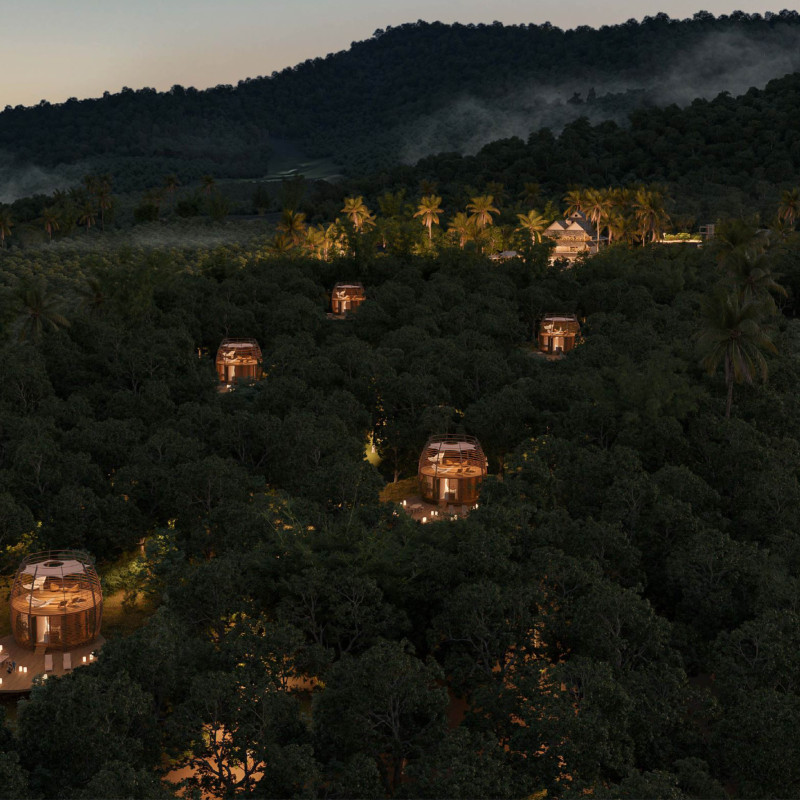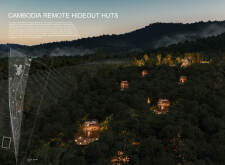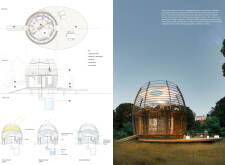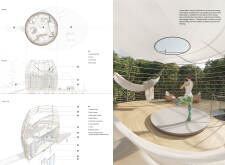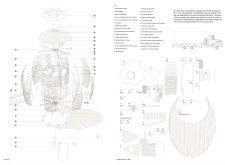5 key facts about this project
The huts feature circular forms that maximize views and natural light, allowing for an immersive living experience. Each unit consists of a sleeping area, kitchenette, and bathroom, designed for functionality while maintaining an open, airy atmosphere. Natural ventilation is facilitated through louvered sliding doors, which enhances airflow and promotes an interaction between indoor and outdoor spaces.
Sustainable practices define the architectural approach of this project. Cross laminated timber is utilized for its sustainability and structural integrity, while steel framing provides robustness. The integration of a photovoltaic canopy underscores the commitment to energy efficiency, supplying power through solar energy. Rainwater harvesting systems are also incorporated, using collected water for various household needs and promoting resource conservation.
Unique Design Approaches
One of the distinguishing features of the Remote Hideout Huts is the circular design, setting it apart from conventional rectangular accommodations. This form not only enhances the sensory experience but also fosters a connection to the natural environment. Elevated structures provide an unobtrusive footprint on the landscape, preserving the ecosystem beneath while offering expansive views of the surroundings.
The project also embraces biophilic design principles, seamlessly blending architectural elements with landscaping to create an environment conducive to relaxation and wellness. Multi-level outdoor spaces, including a yoga deck and lower relaxation areas, encourage outdoor interaction and well-being. The sustainable material choices throughout the design reflect a commitment to minimizing ecological impact while enhancing durability and aesthetic appeal.
Architectural Details and Elements
The project employs a range of materials that contribute to its overall sustainability and functionality. Cross laminated timber serves as the primary building material, supplemented by steel for structural framing. The huts are anchored by reinforced concrete foundations, providing stability and longevity. Additionally, features such as wood flooring and an efficient water filtration system are integrated to enhance the living experience.
Through its careful design, the Remote Hideout Huts exemplify a modern architectural approach to eco-conscious hospitality. Interested readers are encouraged to explore the project presentation to delve deeper into the architectural plans, sections, designs, and innovative ideas that contribute to this engaged relationship between architecture and nature.


